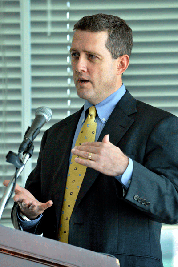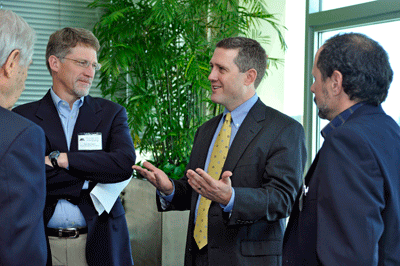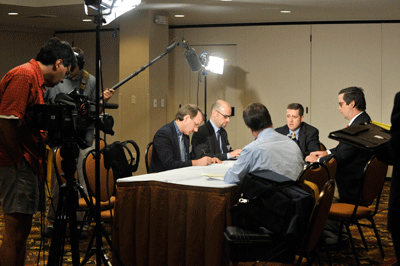President's Message: St. Louis Fed's Approach to Monetary Policy Won't Change
Some of you may be surprised to see a new face on this page. On April 1, I became president and CEO of the St. Louis Fed, succeeding William Poole. If you supported Bill’s thinking on monetary policy, take comfort in knowing that I did, too, and plan to continue in that monetarist tradition for which the St. Louis Fed is known.
While I’m new in this position, I’m not new to the St. Louis Fed. I’ve been an economist here for 18 years. As deputy director of research for monetary analysis, I worked side by side with Bill, helping him craft his policies and helping him prepare for FOMC meetings. For years, I’ve had access to the same information that members of the committee had.
Although you might be satisfied in knowing that there’s continuity at the helm, I want to share with you some of my fundamental beliefs about monetary policy.
In essence, price stability should be the No. 1 goal of policymakers today. Forty or 50 years ago, policymakers took on multiple objectives: low inflation, low unemployment, low nominal interest rates, stable exchange rates—even growth in housing production. More recently, the Fed’s mission has been boiled down to the dual mandate of price stability and maximum sustainable employment. Ben Bernanke and his two immediate predecessors have emphasized that price stability is a precondition for maximum sustainable employment.
What is price stability? In recent policy discussions, it has not meant that prices always stay the same or that price indexes always revert to an average. Rather, because of possible biases in available indexes, price stability is a small, positive rate of inflation, say 0.5 to 1.5 percent a year, depending on the price index being used.
A specific inflation target has been adopted by some central banks, such as those of Canada, the United Kingdom and Europe. The FOMC has yet to go that far. However, even without an explicit numeric target, the Fed has been able to bring inflation down and keep it relatively low over the past several decades.
A key concern today is that inflation and inflation expectations are on the rise. Since late last summer, the Fed has been battling financial market turmoil, which has threatened to send the economy into recession. During the spring, the turmoil became less severe, allowing the Fed to turn attention back toward its price stability objectives.
One important issue facing the FOMC concerns the use of core measures of inflation to judge success or failure. This practice works well when energy and food prices are volatile but ultimately rise at the same rate as other prices. But that is not what is happening today. As many of you are aware, energy prices in particular have simply been rising faster than other prices most of the time over the past five years.
The problem is that, as we are all painfully aware, we have to pay the energy and food prices along with the core prices. It is hurting Fed credibility to say that we are trying to keep inflation low and stable, but at the same time we are not counting some of the prices that are going up at the most rapid pace.
To read Bullard’s bio and his writings, go to www.stlouisfed.org/from-the-president.
Photo Gallery
James Bullard became president and CEO of the Federal Reserve Bank of St. Louis on April 1, 2008. These photos show him in his first public appearances in St. Louis. On June 11, he addressed a meeting of Macroeconomic Advisers at the Chase Park Plaza. On June 12, he met with bankers and other business leaders at the St. Louis Fed.

James Bullard, new president and CEO of the St. Louis Fed, speaks at a meeting of Macroeconomic Advisers on June 11 at the Chase Park Plaza in St. Louis.

At the Macroeconomic Advisers meeting, Bullard speaks with (from left) Murray Weidenbaum (back to camera) of Washington University and Ken Matheny and Chris Varvares, both of Macroeconomic Advisers.

Bullard meets with business media in conjunction with his address to Macroeconomic Advisers. A crew from CNBC filmed the session with reporters. At the table (from the left) were David Nicklaus of the St. Louis Post-Dispatch, Alister Bull of Reuters, Steve Matthews of Bloomberg and Howard Packowitz of Dow Jones.

At the Economic Forum on June 12 at the St. Louis Fed, Bullard uses slides in discussing the economy with bankers and other business leaders.

Bullard makes a point at the reception for bankers and other business executives.

Frank Fleming of Litchfield National Bank chats with Bullard at a reception at the Bank on June 12.
Views expressed in Regional Economist are not necessarily those of the St. Louis Fed or Federal Reserve System.
For the latest insights from our economists and other St. Louis Fed experts, visit On the Economy and subscribe.
Email Us


